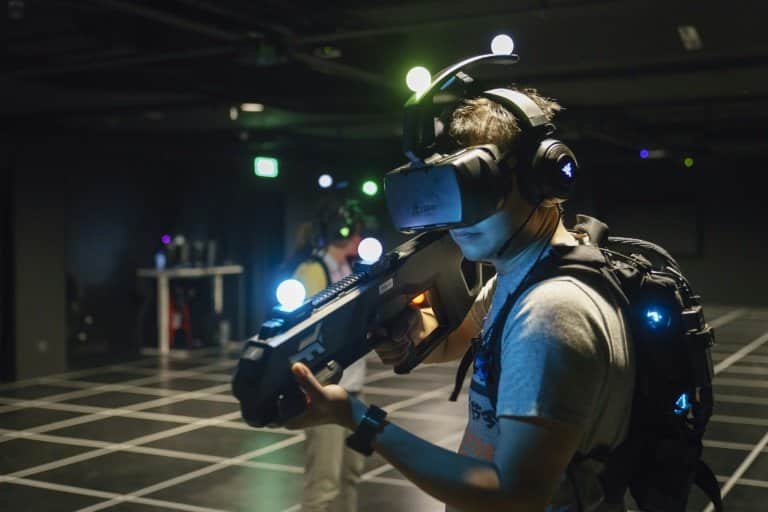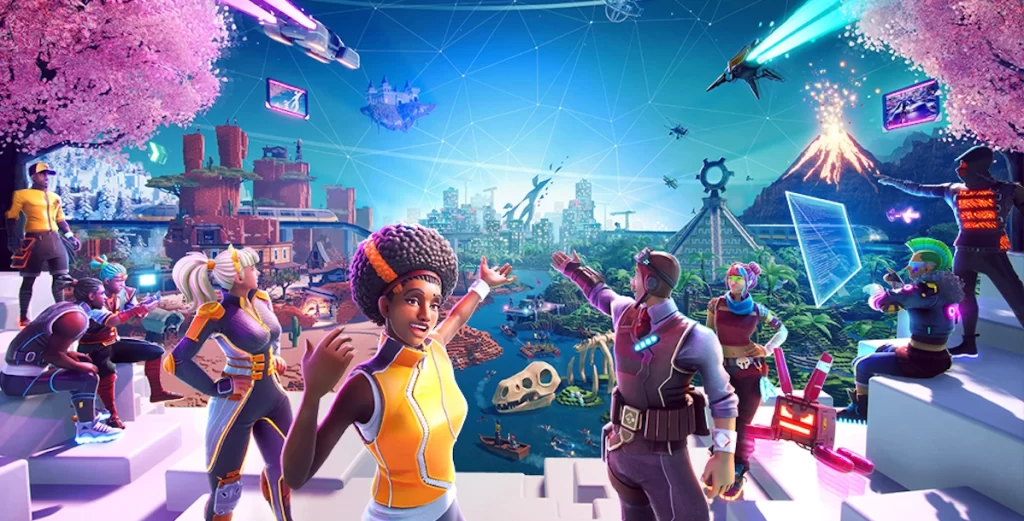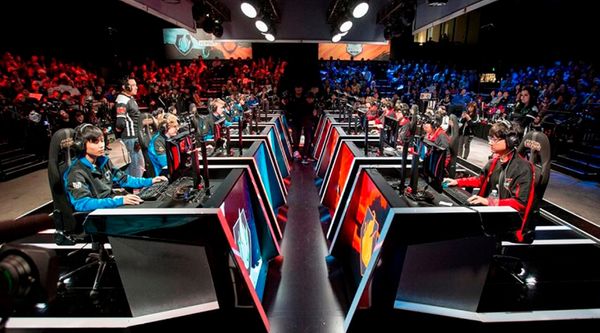When it comes to many of the tech trends impacting our lives, the $90 billion global video games industry is often one of the first places many people get to see them in action. This is true of artificial intelligence (AI), virtual and augmented reality (VR/AR), blockchain, and in particular, today’s hottest buzzword – the metaverse.

Video games have evolved a long way from the primitive and blocky sprites that many of us enjoyed in our youth, and today’s gamers are used to exploring realistic 3D worlds and interacting with hundreds or thousands of other players in real-time. The infrastructure put in place by games developers to enable this is built on some of the most cutting-edge technology, from super-powered computers to ultra-fast 5G and cloud networking. So let’s take a look at the most exciting and important trends impacting the fast-moving world of gaming in the next 12 months:
Cloud gaming
Since the birth of home video gaming in the 1970s, players have come to accept the need to upgrade to a new console or computer every five or so years to ensure they can play the latest and greatest releases. But that paradigm could be coming to an end.

Almost all of the big players in the video game business now offer their games through cloud-based subscription services, including Microsoft, Sony, Google, Nvidia, Tencent, and Amazon. Under this model, there’s no need for gamers to continuously buy and upgrade expensive and power-hungry hardware such as consoles or PC GPUs and keep them in their homes – smart TVs and lightweight streaming devices like Chromecast or FireTV are all that’s needed. Everything takes place in the cloud data center, with the output beamed into homes in the form of streaming video. Additionally, the ongoing spread of super-fast networks such as 5G will bring us to the point where this new way of delivering games will be accessible to more people than ever. All in all, while it’s not a foregone conclusion that dedicated home gaming systems will vanish from our lives, 2022 is a year in which we will see industry movers and shakers throw more resources behind their vision of a streaming, cloud-based future.
Virtual Reality

Gamers were fully bought-in into VR long before it became fashionable amongst real estate agents, surgeons, and the military. The past five years, in particular, have seen a gradual growth in uptake of VR gaming, with a growing number of high-profile franchises including Grand Theft Auto, Minecraft, and Doom becoming accessible through headset technologies. Moreso than its cousin, augmented reality (AR) – which still hasn’t had a really successful mainstream gaming implementation since Pokemon Go, six years ago – VR is set to provide some of the most exciting gaming experiences of the coming year. Thanks to the falling price of hardware, consumer headsets such as the Meta Quest 2 are becoming increasingly affordable. They also benefit from being capable of functioning both as standalone devices and of being connected to a gaming PC to take advantage of their dedicated hardware to enable even more immersive and graphically-rich VR experiences. In the near future, cloud VR could become a reality – further reducing the size of headsets. 2022 might even see the release of Apple’s long-rumored VR headset, which could have the same impact on VR gaming as the iPhone had on mobile gaming.
The Metaverse

While Facebook and Microsoft talk grandly of plans to create immersive, persistent online worlds for work and leisure, millions of gamers are already used to congregating in virtual universes to partake in every form of entertainment, from chess and bridge to blowing each other up with homing missiles. In 2022 this idea of in-game worlds expanding to take in other forms of entertainment such as music concerts in Fortnite or branded marketing “pop-ups” in the hugely popular universe of Roblox will undoubtedly have a big impact on the industry and culture of games. Increasingly, the biggest games and franchises will repurpose themselves as “platforms,” allowing for a much more flexible range of user experiences. While many might still simply want to log into the latest Call of Duty to shoot guns at their friends, others will find room in these worlds to engage in socializing, chatting or other forms of shared interaction. Game creators will find value in keeping players hooked into their platforms, either by growing their loyalty as subscribers or through transforming them into a captive audience for marketers of all flavors.
NFTs and blockchain
Somewhat controversially, several of the biggest creators of games (such as Square Enix and Ubisoft) announced intentions to build non-fungible tokens (NFTs) into their games as a way of letting players win, earn and trade unique in-game items. In 2022, it’s likely that we will start to see some of these plans come to fruition.

The idea isn’t popular with all gamers, particularly as many see these tokens as a wasteful use of energy. This is due to the large amount of processing power necessary to carry out the blockchain algorithms needed to make them function. However, with game publishers declaring that they see a strong future for the convergence of gaming and NFTs and a clear willingness to spend money to make it a reality, it’s likely to become a fact of life.
Another growing trend can be seen in the explosion of “play-to-earn” games that reward gamers with cryptocurrencies for taking part in daily play. Axie Infinity has over a million daily active users, with some earning upwards of $250 per day. This is a pretty decent income in some of the developing countries where the game is widely played!
Esports

Esports principally refers to the evolution of video games to include aspects more usually associated with professional sports, such as live audiences, tournaments, leagues, sponsorships, and salaried players. In 2022, Esports will debut as an official event at the 2022 Asian Games, marking their first inclusion in a major international multi-sport tournament. As with many forms of digital entertainment, Esports exploded in popularity during the Covid-19 pandemic, generating over $1 billion in revenue for the first time during 2021, with the majority coming from media rights and sponsorship, and is forecast to grow to nearly $2 billion in 2022. Additionally, 73 million viewers tuned in to watch the final of the League of Legends World Championship in 2021 – an increase of 60% over 2020, and that record is expected to once again be smashed in 2022. This goes to show that gaming has truly evolved into a spectator sport, and over the next year, we can expect to see both the number of professional players and the size of prize pools continue to expand.




